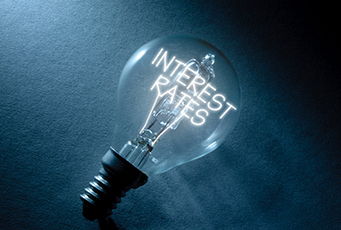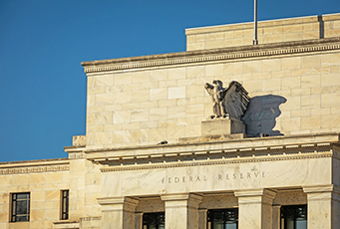
Rising interest rates have been in the news recently. Has the economic jargon overwhelmed you and left you anxious, or did you ignore the topic altogether? Neither strategy is in your best interests! Why? Because rising interest rates impact your investment portfolio.
Understanding interest-rate movements and how they affect your portfolio can be difficult. Luckily, knowing a few basic points can help you feel more confident as you navigate through the current economic environment.
Interest Rates = Price of Money
Simply put, interest rates are the price of money, or more specifically, the price borrowers pay to lenders for the right to use their money for a period of time. Interest rates impact lenders and borrowers differently.
Let’s look at how this works on a small scale. If you’re a lender of money (i.e., when you “lend” to banks through your savings accounts or the purchase of Certificates of Deposits), higher interest rates are good because they increase your earnings! However, if you’re a borrower of money (e.g., mortgage or credit card debt), higher interest rates are not good because it will cost you more money to repay those loans. So, whether higher or lower rates are beneficial depends on what side of the transaction you are on.
Like any product or service, interest rates are largely determined by supply and demand. Remember that concept from Economics 101? If there’s a relatively greater amount of money being borrowed (demand) than money being saved (supply), interest rates will increase. The theory is that as the price of money rises it will entice more people to save. As interest rates fall, it encourages people to spend their money. So, interest rates depend on the supply and demand of money.
What’s the Role of the Federal Reserve?
The Federal Reserve (the Fed) is the country’s central bank and is commonly referred to as “the banks’ bank.” The U.S. government has tasked it with setting short-term interest rates, called the Federal Funds Rate, which are what banks use when lending to each other.
How does it work? To keep it simple, the Fed “creates” and “destroys” money to influence the amount of funds that banks have available to lend. This, in turn, affects the interest rate. The lower the interest rates, the more attractive borrowing money appears to be, which stimulates the economy.
But when central banks artificially keep interest rates too low for too long, it can send false signals to the economy that it’s healthier than it really is. When individuals and businesses believe the economy is in good shape they tend to spend more money, often borrowing it to fund long-term goals. Without the necessary savings in place to fund this expansion, economic growth cannot be sustained. That can lead to price inflation or even a recession.
What’s All This Mean for My Portfolio?
For nearly a decade, the Fed has been “creating” money to push interest rates down to historically low levels. But for the past 18 months, it has gradually raised interest rates to 2 percent. This act has several important implications for your portfolio:
- Bond prices will decrease. Interest rates and bond prices have an inverse relationship. As rates rise, the decline in bond prices is most severe for longer-term bonds, compared to shorter-term and floating-rate bonds.
- Stock prices will be under pressure. Low interest rates in the bond market made investing in stocks a relatively more attractive option. But as interest rates rise, and bonds deliver higher yields, long-term investors may sell their stocks and invest in bonds. Higher rates also mean the cost of capital for companies goes up, resulting in less profit and slower growth.
- The true health of the economy will be tested. For years, the U.S. economy has benefited from the Fed’s low interest-rate policy. As rates “normalize,” individuals, companies, and governments (local, state, and federal) with unprecedented levels of cheap, short-term debt will now face higher payments and potential defaults. The degree to which they can sustain these consequences will largely determine the country’s future growth prospects.
Summary
Market volatility has increased as the Fed gradually raised rates and investors digested the long-term impact. The Fed has indicated it will likely raise rates twice more in 2018. This will further test the stability of our economy. While we can’t predict what the future will bring, it’s important to work with your financial or portfolio advisor to ensure that you’ve taken appropriate steps to protect yourself for whatever lies ahead.
Recommended Articles
Private Equity and M&A in a Low-Rate World
Deal flow is the stream of business proposals, investment...





